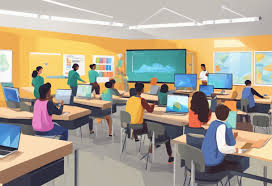The creation of quality kids animated shows involves much more than talented animators and engaging storylines. Behind many successful educational animations stands a team of curriculum specialists, childhood development experts, and experienced teachers who ensure the content delivers both entertainment and educational value. This collaboration between entertainment professionals and educational consultants has revolutionized children’s programming, transforming casual viewing experiences into valuable learning opportunities that support cognitive, social, and emotional development.
When production companies bring teachers and educational experts into the development process, the resulting content tends to align more closely with developmental milestones and educational objectives. These consultants provide crucial insights about age-appropriate content, learning progressions, and effective teaching methodologies that inform every aspect of production—from concept development to script writing to visual presentation. The best educational animations seamlessly blend entertainment and learning objectives so effectively that children may not even realize they’re absorbing educational content while being entertained.
The history of educational animation reveals an evolving understanding of how children learn through media. Early educational programs often took direct instructional approaches, essentially transferring classroom teaching methods to the screen. Modern educational animations, however, reflect our deeper understanding of constructivist learning theories, recognizing that children learn best through stories that allow them to make their own connections and discover concepts through engaging narratives. This shift represents a sophisticated understanding of both childhood development and effective media design.
Literacy development receives particular attention in many educational animations. Language acquisition specialists and reading teachers often consult on shows targeting preschool and early elementary audiences, ensuring that vocabulary is introduced appropriately and that storytelling supports emerging literacy skills. When children encounter new words within the context of engaging animated stories, they develop vocabulary more naturally than through direct instruction alone. Many shows also incorporate text on screen to create connections between spoken and written language.
The representation of mathematical concepts in children’s animations has also evolved significantly through educational consultation. Rather than presenting mathematics as isolated calculations, quality educational animations embed mathematical thinking within problem-solving scenarios that demonstrate the real-world relevance of numerical concepts. When animated characters model mathematical reasoning—measuring ingredients for a recipe or calculating distances for a journey—children develop positive associations with mathematical thinking and recognize its practical applications.
Social-emotional learning represents another crucial area where teacher input shapes animated content. Experienced educators understand the developmental stages of emotional regulation and social skills acquisition, helping create content that models healthy emotional expression, conflict resolution, and relationship building. When children observe favorite characters navigating social challenges successfully, they gain templates for managing similar situations in their own lives. Many teachers report that referencing familiar animated scenarios provides an effective shorthand for addressing classroom conflicts.
Cultural authenticity and inclusivity benefit tremendously from diverse educational consultation. When creating content featuring various cultures, production teams increasingly engage cultural consultants and educators from represented communities to ensure respectful and accurate portrayals. This attention to authenticity prevents harmful stereotypes while providing children with windows into diverse experiences and mirrors reflecting their own identities—both crucial components of developing global citizenship and healthy self-concept.
The science of cognitive development informs pacing, visual design, and information presentation in quality educational animations. Developmental psychologists consulting on children’s programming provide insights about attention spans, information processing capabilities, and cognitive load appropriate for different age groups. These considerations influence everything from scene length to visual complexity to the layering of concepts within storylines. The most effective educational animations strike a balance that challenges children cognitively without overwhelming their processing capabilities.
Feedback loops between educators and content creators strengthen educational animations over time. Many production companies conduct classroom testing where teachers implement animated content and provide feedback about student engagement and learning outcomes. This real-world testing reveals which approaches resonate most effectively with children and which concepts need refinement. The most successful educational animation companies maintain ongoing relationships with teaching professionals who provide continuous improvement feedback.
The future of educational animation likely involves increased personalization and interactivity, potentially responding to individual learning needs and allowing children to make choices that affect storyline development. As technology evolves, the line between passive viewing and active learning continues to blur. Throughout this evolution, the expertise of teachers and educational specialists will remain essential in creating content that not only captures children’s attention but also supports their developmental journey toward becoming thoughtful, knowledgeable, and compassionate individuals.

